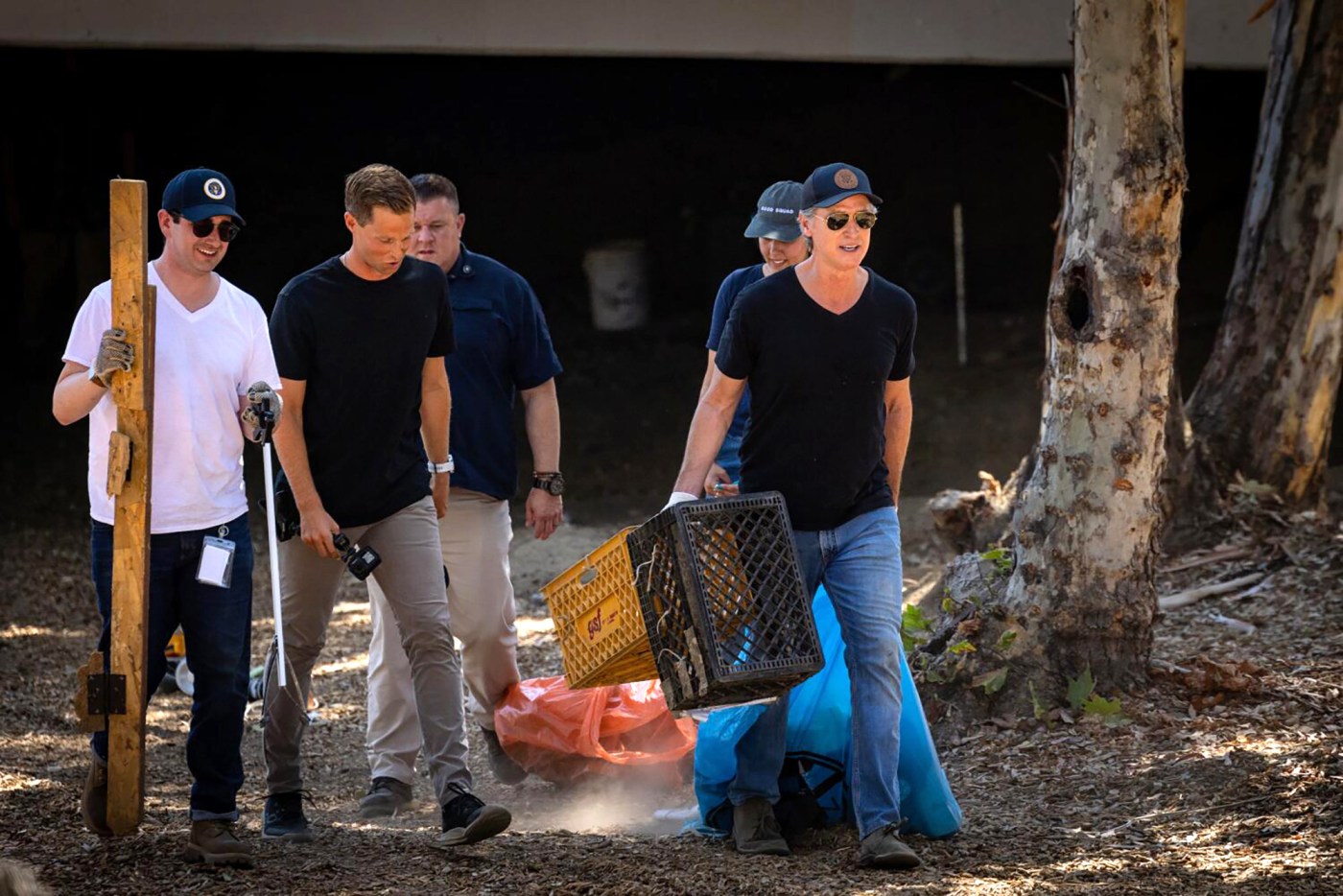
After seeking homeless spending cuts, Newsom announces $170 million to bring Bay Area residents off the street
Months after Gov. Gavin Newsom sought unsuccessfully to cut a $1 billion program to help local governments combat homelessness, the governor on Tuesday touted the latest round of funding from the initiative now going to cities and counties across the state.
The grants will help pay for permanent housing, shelter sites and various support services for homeless people and those at risk of losing their housing. Newsom said the awards come with new accountability measures and reporting requirements to ensure the money is well spent.
Local governments will be required to report their expenditures each month while regularly submitting program outcomes, including how many people are helped into housing. The information will be posted on online public dashboards.
“In the past, it was just send the money down, whatever happens, happens — that’s no longer the case,” Newsom said Tuesday at a news conference in Los Angeles announcing the $827 million in awards.
The money will go to 37 regions representing 100 cities, counties and local organizations. Each was required to submit an approved homelessness response plan to apply for funding.
In the Bay Area, the Santa Clara County region will receive $57 million, the Alameda County region will receive $56 million and the San Francisco region will receive $43 million. Areas with smaller homeless populations, including the San Mateo, Marin, Napa, and Solano county regions, will receive $5 million or less.
In all, the nine-county Bay Area will receive nearly $170 million. The money will be split between county and city governments.
“Continued state funding…has been hugely important to the County of Santa Clara’s efforts to provide temporary housing and services to unhoused individuals and families,” said KJ Kaminski, acting director of the County of Santa Clara Office of Supportive Housing, which has also used the money on financial assistance for residents on the brink of homelessness.
During negotiations over the state budget this spring, Newsom, in his budget proposal, initially declined to include a sixth round of funding for the Homeless Housing and Assistance Prevention program. The Legislature countered by asking for the full $1 billion. The governor then proposed slashing $280 billion from the program — arguing cuts were needed to close a multibillion-dollar budget deficit — before ultimately agreeing to fund it fully.
Related Articles
Candidates looking to fill open Berkeley council seats weigh in on encampment policy
San Jose Rotary unveils mobile medical clinic to serve vulnerable populations
Groups behind Berkeley protest encampments call for the movement to spread across the state
Walters: How much to end homelessness in California? Try $100 billion
Berkeley councilmembers running for reelection in city divided over homelessness
The announcement on Tuesday follows a scathing state audit in April that found the state had failed to adequately track the $24 billion it spent on homelessness over the past five years. During that time, California’s unhoused population ballooned 38% to more than 181,000 people. In 2022, the Bay Area had an estimated 38,000 homeless residents.
Shortly after a landmark U.S. Supreme Court ruling granted officials new authority to police homelessness in June, Newsom ordered state agencies to ramp up encampment sweeps and urged local governments to do the same — while threatening to withhold funding from local governments that failed to get more people off the street.
On Tuesday, Newsom also announced new guidance for closing encampments, including prioritizing camps based on health and safety concerns, providing camp residents at least 48-hours notice and connecting them to supportive services. In 2022, Newsom launched a separate, multi-year $1 billion program to help cities and counties clear encampments and move homeless residents into shelters.


